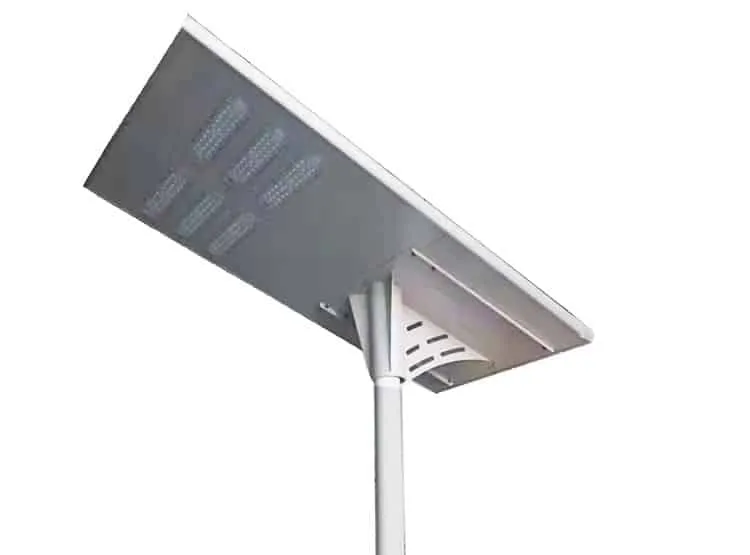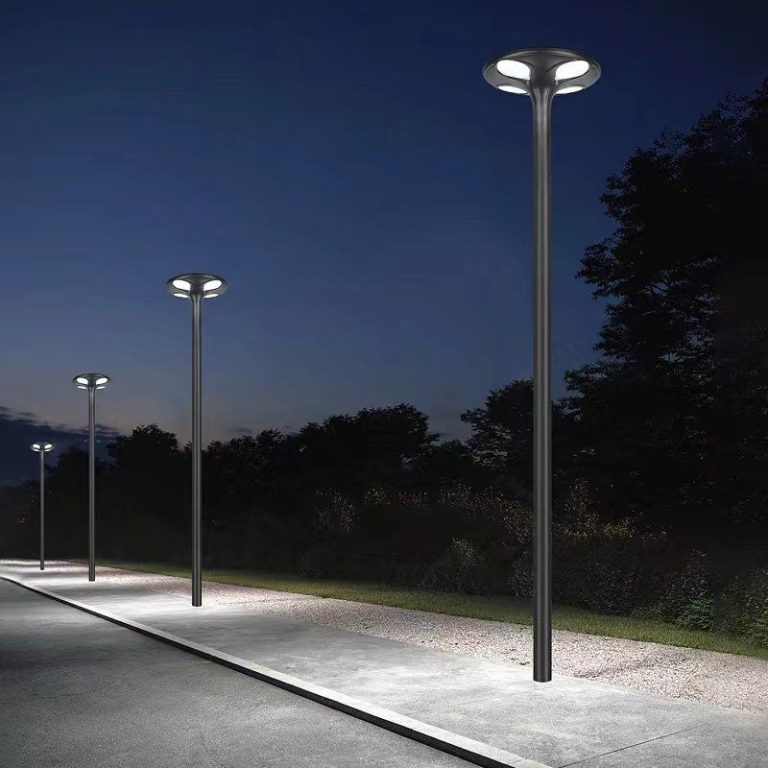Table of Contents
Understanding the Economics of All-in-One Solar Street Lighting Fixtures for Village Applications
In rural areas where access to reliable electricity is limited, finding sustainable lighting solutions is paramount for community development. All-in-one solar street lighting fixtures have emerged as a promising solution, offering an efficient and environmentally friendly alternative to traditional grid-powered streetlights. However, understanding the economics behind these fixtures is crucial for villages considering their adoption.
| Nr. | Article Name |
| 1 | Integrated Solar Street Light |
At first glance, the initial cost of all-in-one solar street lighting fixtures may seem higher than conventional streetlights. However, a deeper analysis reveals the long-term economic benefits they offer. Unlike grid-powered lights, solar fixtures incur no ongoing electricity costs, as they harness energy from the sun. This translates to significant savings over the lifespan of the system, making them a cost-effective investment for villages in the long run.
Moreover, the maintenance requirements of solar street lighting fixtures are considerably lower compared to grid-powered lights. Traditional streetlights often require frequent bulb replacements and repairs due to wear and tear, adding to operational costs. In contrast, all-in-one solar fixtures are designed to be durable and require minimal maintenance, reducing the burden on village resources and manpower.
Another economic advantage of all-in-one solar street lighting fixtures is their versatility and scalability. These fixtures can be easily installed in remote locations without the need for extensive infrastructure development, making them ideal for rural villages with limited access to grid electricity. Additionally, the modular design of these systems allows for easy expansion as the village grows, providing a flexible and cost-efficient lighting solution that can adapt to changing needs.
Furthermore, the environmental benefits of solar street lighting fixtures contribute to long-term economic savings for villages. By reducing reliance on fossil fuels and minimizing carbon emissions, these fixtures help mitigate the impact of climate change while also improving air quality and public health. Additionally, the use of renewable energy sources like solar power reduces dependence on finite resources, ensuring energy security for future generations.
In many cases, governments and international organizations offer financial incentives and subsidies to promote the adoption of solar energy technologies, further offsetting the initial investment costs for villages. These incentives can include tax credits, grants, or preferential financing options, making solar street lighting fixtures an even more attractive option from an economic standpoint.
Moreover, the social and economic benefits of well-lit streets cannot be overstated. Improved lighting enhances safety and security for residents, reducing the risk of accidents and crime in the community. This, in turn, can lead to increased economic activity and investment, as businesses feel more confident operating in well-lit areas.
In conclusion, while the upfront cost of all-in-one solar street lighting fixtures may be higher than traditional grid-powered lights, their long-term economic benefits far outweigh this initial investment. From lower operational and maintenance costs to environmental sustainability and improved community safety, solar street lighting fixtures offer a comprehensive solution for villages looking to enhance their infrastructure. By understanding the economics behind these fixtures, villages can make informed decisions that promote sustainable development and long-term prosperity.
Factors Influencing the Cost of Solar Street Lighting Systems in Rural Areas
Solar street lighting systems have emerged as a promising solution to illuminate rural areas, offering both sustainability and cost-efficiency. However, the price of these systems can vary significantly depending on several factors. Understanding these factors is crucial for effectively planning and implementing solar street lighting projects in villages.
One of the primary determinants of the cost of solar street lighting systems is the quality and capacity of the components used. High-quality solar panels, batteries, LED lights, and controllers are essential for ensuring durability and efficiency. While initial costs may be higher for superior components, they often result in lower long-term maintenance and operational expenses, making them a more economical choice in the long run.
Moreover, the geographical location and local climate conditions play a significant role in determining the cost of solar street lighting systems. Areas with abundant sunlight may require fewer solar panels to meet energy requirements, reducing initial investment costs. Conversely, regions with frequent cloud cover or limited sunlight may necessitate larger solar panel arrays and battery capacities, increasing the overall cost of the system.
Installation and labor costs also contribute significantly to the total price of solar street lighting systems. In rural areas, where skilled labor may be scarce, transportation and accommodation expenses for installation teams can add up. Additionally, factors such as terrain complexity and accessibility can affect installation difficulty and, consequently, costs. Therefore, conducting a thorough site assessment and planning installation logistics are essential for minimizing expenses.
Furthermore, government policies and incentives can influence the cost of solar street lighting systems in rural areas. Subsidies, tax credits, and grants offered by local or national authorities can significantly reduce upfront investment requirements, making solar lighting more affordable for villages. Conversely, regulatory hurdles or lack of supportive policies may hinder the adoption of solar technology, increasing overall project costs.
Another critical factor affecting the cost of solar street lighting systems is maintenance and servicing requirements. While solar-powered lights generally have lower operational costs than traditional grid-connected systems, periodic maintenance is still necessary to ensure optimal performance and longevity. Investing in high-quality components and implementing proactive maintenance strategies can help mitigate long-term maintenance expenses.
In addition to these factors, economies of scale and project size can impact the overall cost-effectiveness of solar street lighting systems in rural areas. Larger projects tend to benefit from bulk purchasing discounts and lower per-unit installation costs, resulting in lower overall expenditure. Collaborative initiatives among neighboring villages or communities can leverage economies of scale to reduce individual project costs further.
In conclusion, the cost of solar street lighting systems in rural areas is influenced by various factors, including component quality, geographical location, installation labor, government policies, maintenance requirements, and project scale. By carefully considering these factors and implementing cost-effective strategies, villages can harness the power of solar energy to illuminate their streets sustainably and affordably. As solar technology continues to advance and become more accessible, the prospect of well-lit, energy-efficient rural communities becomes increasingly achievable.
Maximizing Efficiency and Cost-effectiveness of Solar Street Lighting Solutions for Village Communities
In the quest for sustainable and efficient lighting solutions, solar street lighting has emerged as a frontrunner, especially in rural communities where access to reliable electricity remains a challenge. Among the various options available, all-in-one solar street lighting fixtures have gained popularity for their simplicity, reliability, and cost-effectiveness. These systems integrate all components – solar panel, battery, LED light, and controller – into a single unit, offering a compact and hassle-free solution for village streets and pathways.

One of the primary advantages of all-in-one solar street lighting fixtures is their ease of installation. Unlike traditional solar street lighting systems that require extensive wiring and separate installation of each component, all-in-one fixtures come pre-assembled, reducing installation time and costs significantly. This makes them particularly suitable for remote village communities where skilled manpower and resources may be limited.
Moreover, the compact design of these fixtures minimizes the need for additional infrastructure such as poles and mounting brackets, further streamlining the installation process. Village communities can quickly deploy these solar street lights without extensive planning or construction, allowing them to illuminate their streets and public spaces swiftly.
In addition to their ease of installation, all-in-one solar street lighting fixtures are also highly efficient in harnessing solar energy. Equipped with high-quality solar panels and efficient battery storage systems, these fixtures can generate and store sufficient energy to power the LED lights throughout the night, even in areas with limited sunlight exposure. This ensures reliable lighting for village streets and pathways, enhancing safety and security for residents.
Furthermore, the integrated design of all-in-one fixtures reduces the risk of theft or damage to individual components. Since all vital elements are housed within a single unit, there are fewer vulnerable points susceptible to tampering or vandalism. This is particularly advantageous for village communities where maintaining and securing outdoor infrastructure can be challenging.
In terms of cost-effectiveness, all-in-one solar street lighting fixtures offer significant savings over the long term. While the initial investment may be slightly higher compared to traditional grid-connected street lights, the absence of ongoing electricity bills and minimal maintenance requirements result in substantial savings over the operational lifespan of the system. Village communities can allocate their resources more efficiently, redirecting funds previously spent on energy bills towards other essential services and development initiatives.
Additionally, the environmental benefits of solar street lighting cannot be overstated. By harnessing renewable solar energy, village communities can reduce their carbon footprint and contribute to mitigating climate change. All-in-one solar street lighting fixtures provide a sustainable alternative to fossil fuel-based lighting systems, helping to preserve the environment for future generations.
In conclusion, all-in-one solar street lighting fixtures offer a practical and cost-effective solution for illuminating village streets and public spaces. Their ease of installation, efficiency, and long-term cost savings make them an ideal choice for rural communities seeking reliable lighting solutions. By embracing solar technology, village communities can enhance safety, security, and sustainability while reducing their dependence on traditional energy sources. As the world continues to prioritize sustainable development, all-in-one solar street lighting stands out as a beacon of progress in the journey towards a brighter future for all.







